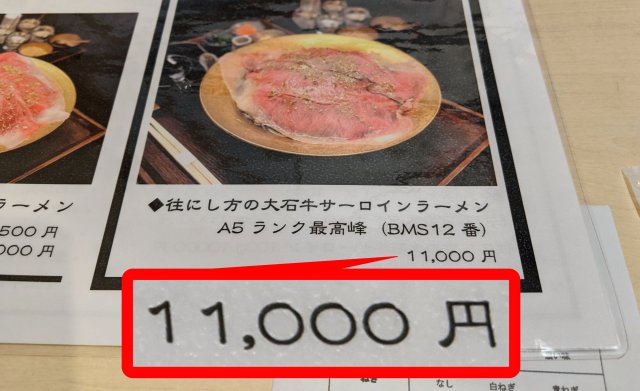
We splurge on luxury noodles with a luxury price tag.
When you’re looking for a cheap meal to fill you up in Japan, you can’t go past a steaming hot bowl of ramen. However, if you’re looking to pay through the nose for noodles, there are a few places where you can do that too, and Matsusakagyuu Ramen Hitori Shabu Shabu Matsutora in Tokyo’s Akasaka district is one such place.
▼ The restaurant’s mouthful of a name translates to “Matsusaka Beef Ramen Solo Shabu Shabu Pine Tree Tiger”, with “shabu shabu” referring to Japanese hotpot.
Matsusaka beef hails from Mie Prefecture and is famous for being one of Japan’s “Sandai Wagyu” (“big three wagyu“), along with Kobe beef from Hyogo Prefecture and Omi beef from Shiga Prefecture. Known for its high fat-to-meat ratio, Matsusaka beef is incredibly expensive, so naturally Matsusaka Beef Ramen also comes with a high price tag.
▼ When we visited Matsutora, we were ushered to a counter seat, where condiments and a hot pot for shabu shabu had been placed on the table in advance.
Having only opened in May, the restaurant was beautifully appointed, with counter seating set up against the wall in a hori-gotatsu (literally “dug-out kotatsu”) style, with a low table and a hollowed-out area beneath it for your legs. Diners use high-backed chairs on tatami floors here, providing the ultimate comfort for the high-class experience, and looking at the menu, we saw prices were equally plush.
The prized beef ramen starts at 1,980 yen (US$17.87) for a bowl of A5 Matsusaka Beef Ramen, and 2,500 yen for A5 Sirloin Matsusaka beef ramen, with each option containing a single slice of meat.
We were looking to splurge on the most expensive item we could find on the menu, which was the “Inishie no Taiseki Gyu Sirloin Ramen A5 Rank Saikoho (BMS 12)” (“Ancient Times Boulder Beef Sirloin Ramen Peak A5 Rank BMS 12”), priced at a whopping 11,000 yen ($99.28).
“Ancient Times Boulder Beef” is also known as “phantom beef” due to its rarity, as it’s sourced from only around ten cows per year, and only from Japanese black breed heifers that have been fattened for over 1,200 days (3.2 years).
Moreover, “BMS 12” is classed as the highest quality of beef (the beef has at least 56.3 percent intramuscular fat, which leads to exquisite marbling) in the already top A5 rank (A5 Rank can include BMS levels from 8-12), making this the most supreme of supreme wagyu money can buy.
▼ Just as we were wondering if it would be a shame to spoil such high-quality wagyu by placing it in a bowl of ramen, this arrived.
We’d never seen a bowl of ramen this stunning, and we were so dazzled by the shine on the nori seaweed and the scattering of extravagant flakes of gold leaf that we weren’t sure if there were any noodles here at all, as we couldn’t see them for all the meat that was covering them.
▼ Gold leaf on BMS 12 A5 rank Inishie Matsusaka beef in noodle broth is a rare sight indeed.
Once we managed to tear our eyes away from the beauty of the dish, we dipped our spoon in to assess the quality of the broth. It was clear and had an elegant, refined taste, and when we asked staff about it, they told us it contained smoked bonito soup stock and was made according to a recipe that had been handed down from the very first chef of Osaka Nadaman, an exclusive Japanese-style restaurant founded in 1830.
Impressed by the broth, it was time to move on to the meat, and lifting the marbled slice from the bowl revealed it to be so thin that it had been cooked by the heat of the broth, as if it were in a hotpot. Placing one end of it on the tongue, the meat was so delicately soft that it broke away and melted in the mouth without any pressure from the jaws whatsoever.
▼ The beef had a texture like butter.
Beneath the sublime slice of beef lay some more familiar ramen ingredients – noodles, a boiled egg, and some sliced mushrooms. The broth was so refined you could see right to the bottom of the bowl.
The noodles were another hidden gem, with a deliciously chewy texture and delicate flavour that allowed the meat and broth to shine through.
For avid lovers of wagyu, this is a meal that’s well worth the price tag, not only for its refined flavour but for the chance to taste some of the country’s rarest and finest beef. The restaurant aims to cater to all budgets, though, with the cheapest dish on the menu being a 500-yen Ryotei Dashi Ramen (with “ryotei” being the word for a luxurious traditional Japanese restaurant) and the most expensive dish being the Kaiun Hissho Kinpaku Sanno Ramen (“Better Fortune Certain Victory Gold Leaf Saano Ramen”), priced at…
▼ 110,000 yen ($992.82)!
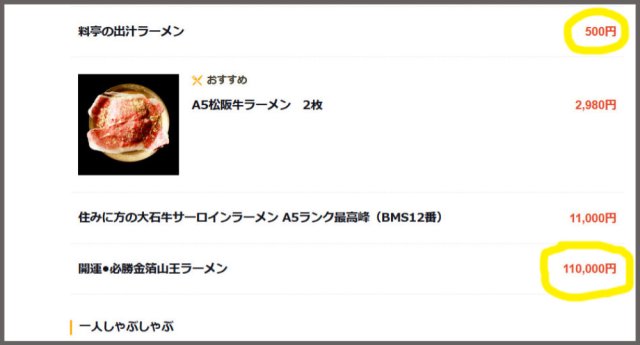
While we thought we’d eaten the most expensive dish on the menu, it turns out there was an even more exclusive dish to be had, and it was so secret it wasn’t even listed on the menu inside the restaurant. We only found out about the super expensive dish after looking at the menu on the restaurant’s listing at the Tabelog dining website.
Curious to find out how popular the $1,000 ramen was, we asked staff at the restaurant about it, and they told us they were yet to receive an order for it. Understandable, given that it would take a lot of courage for someone to order such an expensive dish — and we would know, as we’d fretted over spending $100 on our meal.
We can’t deny we’re now curious to step up our game and explore the wonders of $1,000 ramen. Because although our budgets are more suited to vending machine ramen, now that our taste buds have gotten a taste of luxury noodles, they’re tempting us to splurge on expensive options more often!
Restaurant information
Matsusakagyuu Ramen Hitori Shabu Shabu Matsutora / 松阪牛ラーメン 一人しゃぶしゃぶ 松虎
Address: Tokyo-to, Minato-ku, Akasaka 3-9-16 Fukutora Building 1F
東京都港区赤坂3-9-16 福虎ビル 1F
Open 11:30 a.m.-7 p.m. (closed Saturdays and Sundays)
Photos ©SoraNews24 unless otherwise stated
● Want to hear about SoraNews24’s latest articles as soon as they’re published? Follow us on Facebook and Twitter!
[ Read in Japanese ]

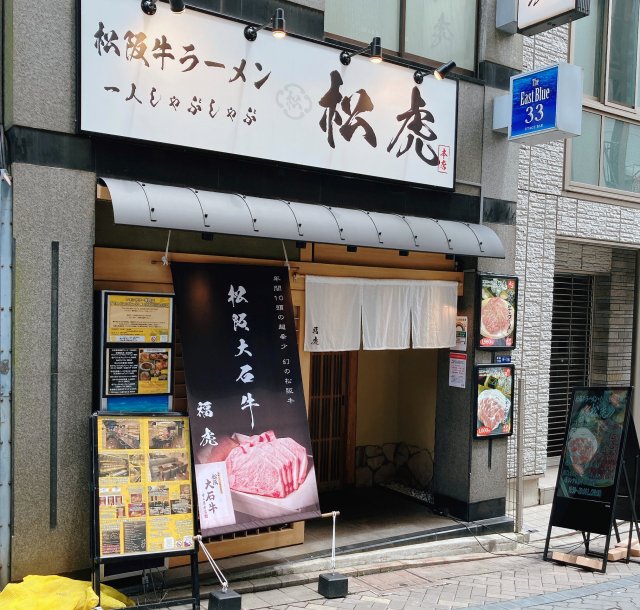

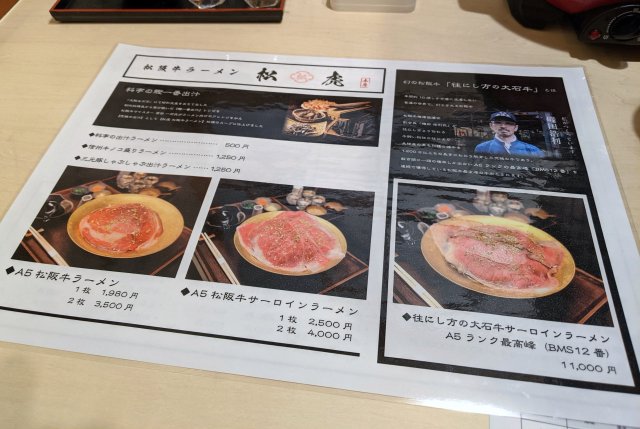
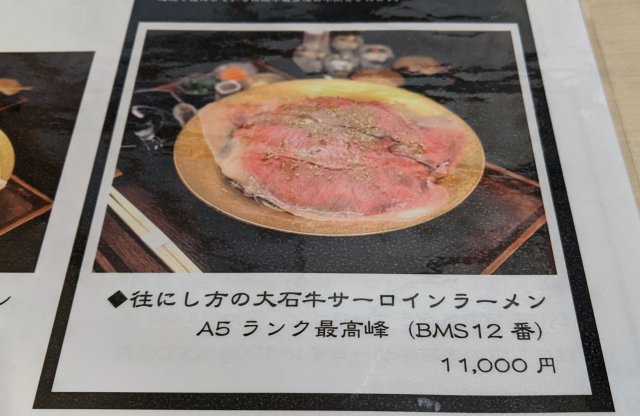
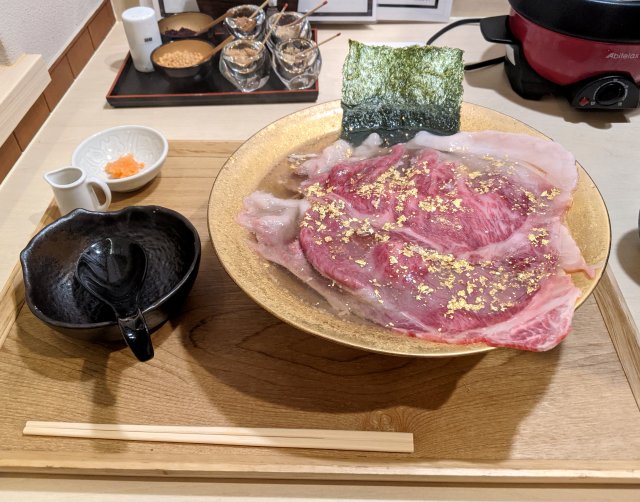
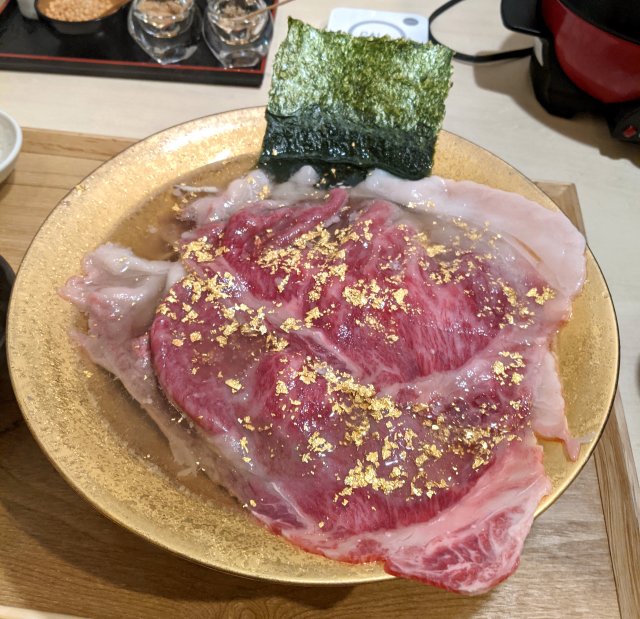
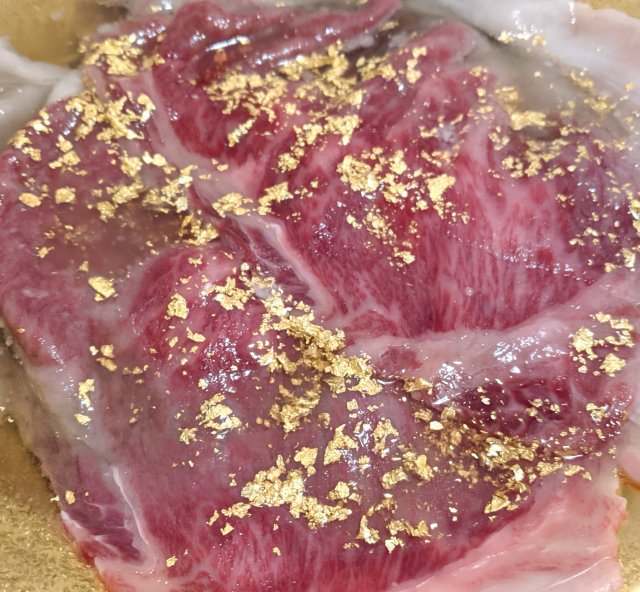
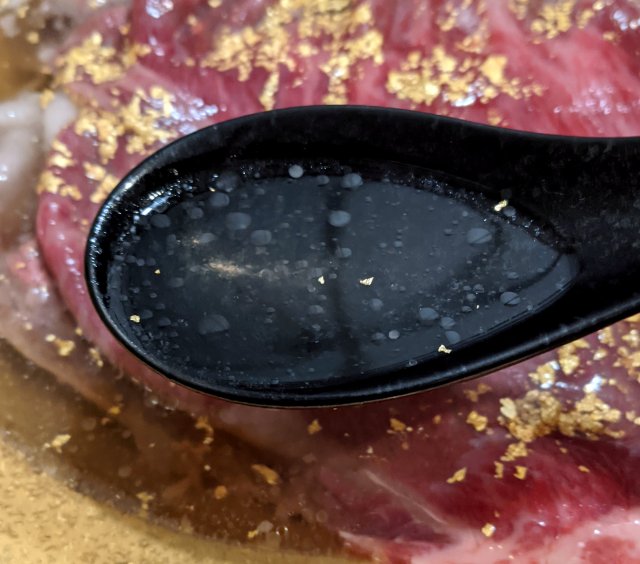
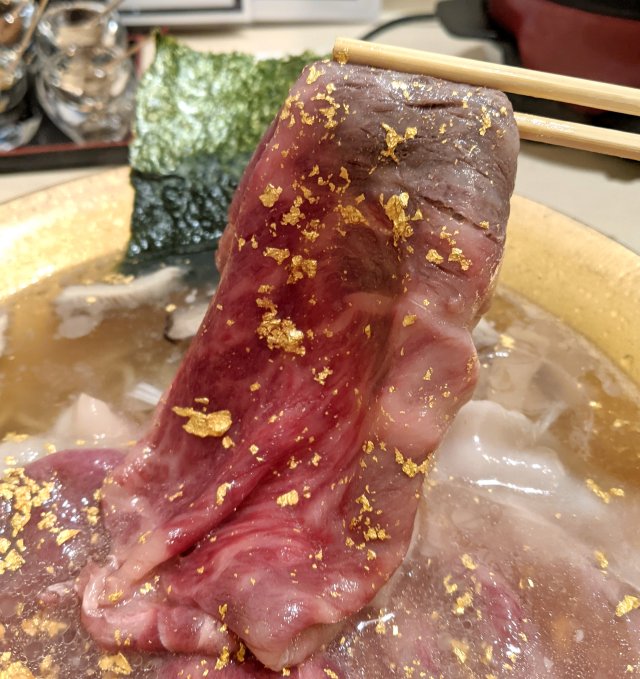
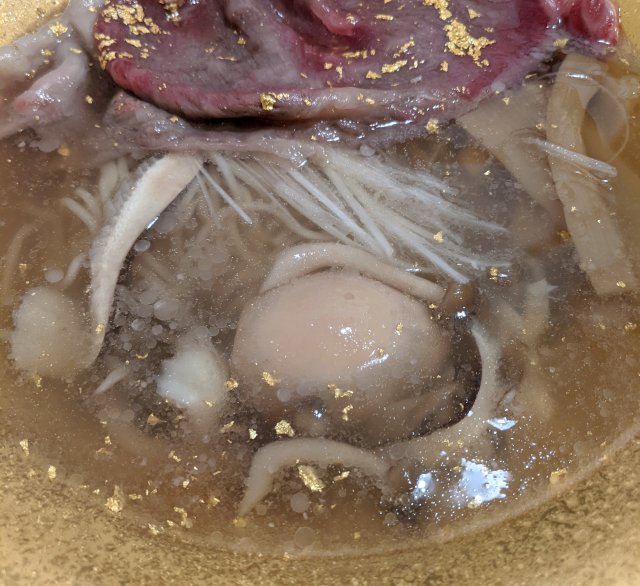
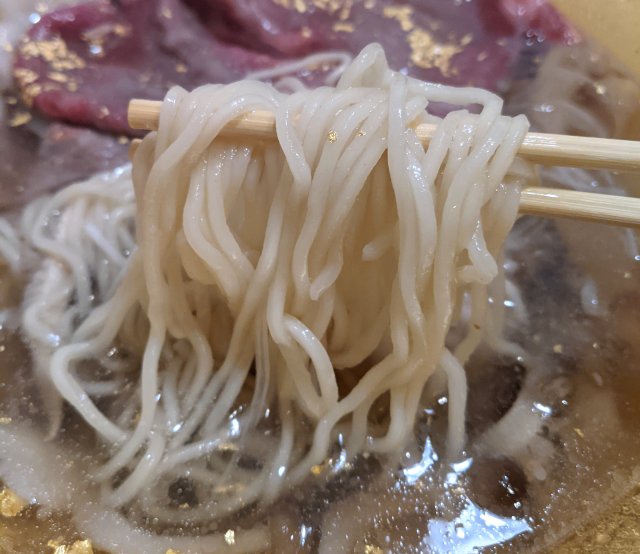
 We enjoy an unlimited salad and dessert buffet for 780 yen at Tokyo shabu shabu restaurant
We enjoy an unlimited salad and dessert buffet for 780 yen at Tokyo shabu shabu restaurant Yakiniku Like in Tokyo starts serving up solo shabu shabu hot pot, and we tried it
Yakiniku Like in Tokyo starts serving up solo shabu shabu hot pot, and we tried it Japanese restaurant combines solo shabu shabu dining with the fun of a sushi train
Japanese restaurant combines solo shabu shabu dining with the fun of a sushi train Wagyu Burger opens in Tokyo, serving up highest-grade beef at reasonable prices
Wagyu Burger opens in Tokyo, serving up highest-grade beef at reasonable prices Awesome mountain of meaty goodness now at beef bowl restaurant in Tokyo’s Akihabara and Shimbashi
Awesome mountain of meaty goodness now at beef bowl restaurant in Tokyo’s Akihabara and Shimbashi Hello, cosmetics! Clinique teams up with Hello Kitty this summer for first-time collaboration
Hello, cosmetics! Clinique teams up with Hello Kitty this summer for first-time collaboration Demon Slayer: Kimetsu no Yaiba gets new roller coaster attractions and food at Universal Studios Japan
Demon Slayer: Kimetsu no Yaiba gets new roller coaster attractions and food at Universal Studios Japan How to order snacks on a Shinkansen bullet train in Japan
How to order snacks on a Shinkansen bullet train in Japan High-fashion Totoro cuddle purse is like an elegant stroll in the forest【Photos】
High-fashion Totoro cuddle purse is like an elegant stroll in the forest【Photos】 Japan’s new difficult-to-drink-from beer glass protects your liver, but it’s a brutal experience
Japan’s new difficult-to-drink-from beer glass protects your liver, but it’s a brutal experience Kyoto Tower mascot termination reveals dark side behind cute Japanese characters
Kyoto Tower mascot termination reveals dark side behind cute Japanese characters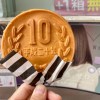 Edible 10-yen coins become a hot new trend in Tokyo【Taste test】
Edible 10-yen coins become a hot new trend in Tokyo【Taste test】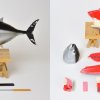 Tsukiji Fish Market Vendor Releases Tuna For Home Assembly
Tsukiji Fish Market Vendor Releases Tuna For Home Assembly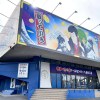 A visit to the best UFO catcher arcade in the universe!
A visit to the best UFO catcher arcade in the universe! New samurai glasses are Japan’s latest weird must-have souvenir
New samurai glasses are Japan’s latest weird must-have souvenir Nintendo history you can feel – Super NES, N64, and GameCube controllers become capsule toys
Nintendo history you can feel – Super NES, N64, and GameCube controllers become capsule toys “The most Delicious Cup Noodle in history” – Japan’s French Cup Noodle wins our heart【Taste test】
“The most Delicious Cup Noodle in history” – Japan’s French Cup Noodle wins our heart【Taste test】 Starbucks releases a cute Frappuccino and Unicorn Cake…but not in Japan
Starbucks releases a cute Frappuccino and Unicorn Cake…but not in Japan McDonald’s Japan’s Soft Twist Tower: A phantom ice cream only sold at select branches
McDonald’s Japan’s Soft Twist Tower: A phantom ice cream only sold at select branches Yabai Ramen: What makes this Japanese ramen so dangerous?
Yabai Ramen: What makes this Japanese ramen so dangerous? Finally! Nintendo Japan expands Switch 8-bit controller sales to everybody, Online member or not
Finally! Nintendo Japan expands Switch 8-bit controller sales to everybody, Online member or not Japanese government wants to build luxury resorts in all national parks for foreign tourists
Japanese government wants to build luxury resorts in all national parks for foreign tourists To combat declining birth rate, Japan to begin offering “Breeding Visas” to foreigners
To combat declining birth rate, Japan to begin offering “Breeding Visas” to foreigners 10 things you should buy at 7-Eleven in Japan
10 things you should buy at 7-Eleven in Japan Studio Ghibli releases anime heroine cosplay dresses that are super comfy to wear
Studio Ghibli releases anime heroine cosplay dresses that are super comfy to wear Woman charged for driving suitcase without a license in Osaka
Woman charged for driving suitcase without a license in Osaka Studio Ghibli unveils My Neighbour Totoro miniature house model
Studio Ghibli unveils My Neighbour Totoro miniature house model Kyoto experiencing problems with foreign tourists not paying for bus fares, but not on purpose
Kyoto experiencing problems with foreign tourists not paying for bus fares, but not on purpose Fighting mild hunger with a Japanese soda that turns into jelly in the stomach【Taste test】
Fighting mild hunger with a Japanese soda that turns into jelly in the stomach【Taste test】 Studio Ghibli’s Howl’s Moving Castle tapestry unveiled in Japan for first time
Studio Ghibli’s Howl’s Moving Castle tapestry unveiled in Japan for first time McDonald’s new Happy Meals offer up cute and practical Sanrio lifestyle goods
McDonald’s new Happy Meals offer up cute and practical Sanrio lifestyle goods Sales of Japan’s most convenient train ticket/shopping payment cards suspended indefinitely
Sales of Japan’s most convenient train ticket/shopping payment cards suspended indefinitely Sold-out Studio Ghibli desktop humidifiers are back so Totoro can help you through the dry season
Sold-out Studio Ghibli desktop humidifiers are back so Totoro can help you through the dry season Japanese government to make first change to romanization spelling rules since the 1950s
Japanese government to make first change to romanization spelling rules since the 1950s Foreigner’s request for help in Tokyo makes us sad for the state of society
Foreigner’s request for help in Tokyo makes us sad for the state of society Ghibli founders Toshio Suzuki and Hayao Miyazaki contribute to Japanese whisky Totoro label design
Ghibli founders Toshio Suzuki and Hayao Miyazaki contribute to Japanese whisky Totoro label design Doraemon found buried at sea as scene from 1993 anime becomes real life【Photos】
Doraemon found buried at sea as scene from 1993 anime becomes real life【Photos】 Tokyo’s most famous Starbucks is closed
Tokyo’s most famous Starbucks is closed Princesses, fruits, and blacksmiths: Study reveals the 30 most unusual family names in Japan
Princesses, fruits, and blacksmiths: Study reveals the 30 most unusual family names in Japan Is ramen without the “men” a Tokyo dining paradox worth experiencing?【Taste test】
Is ramen without the “men” a Tokyo dining paradox worth experiencing?【Taste test】 Japanese restaurant serves extra wide noodles next to Tokyo Station
Japanese restaurant serves extra wide noodles next to Tokyo Station Japanese restaurant says its wonder ramen provides all the vegetables your body needs in one bowl
Japanese restaurant says its wonder ramen provides all the vegetables your body needs in one bowl Have you tried Tokushima ramen? No? You should (says our obsessed Japanese-language reporter)
Have you tried Tokushima ramen? No? You should (says our obsessed Japanese-language reporter) We found a popular Japanese ramen chain in South Korea!…or so we thought
We found a popular Japanese ramen chain in South Korea!…or so we thought Yoshinoya beef ramen? Gyudon king’s sister chain opens first Tokyo branch【Taste test】
Yoshinoya beef ramen? Gyudon king’s sister chain opens first Tokyo branch【Taste test】 This London ramen restaurant’s super-strange ramen shocks our Japanese taste-tester
This London ramen restaurant’s super-strange ramen shocks our Japanese taste-tester Ramen vending machine in Tokyo satisfies noodle and gyoza cravings at any time of day or night
Ramen vending machine in Tokyo satisfies noodle and gyoza cravings at any time of day or night $89 “Phantasmal Sushi Roll” fancies up life with Matsusaka beef and truffle salt 【Taste Test】
$89 “Phantasmal Sushi Roll” fancies up life with Matsusaka beef and truffle salt 【Taste Test】 Crazy expensive “phantom beef” instant curry — Dream come true or edible nightmare?【Taste test】
Crazy expensive “phantom beef” instant curry — Dream come true or edible nightmare?【Taste test】 Tonkotsu ramen rice bowl blows our minds, makes us appreciate noodles in a new light
Tonkotsu ramen rice bowl blows our minds, makes us appreciate noodles in a new light Tokyo’s new frozen ramen vending machines are brain-breakingly amazing【Taste test】
Tokyo’s new frozen ramen vending machines are brain-breakingly amazing【Taste test】 What does vegan ramen taste like? We try Veggie Brown Rice Ramen
What does vegan ramen taste like? We try Veggie Brown Rice Ramen We try out Pizza Hut Taiwan’s Ramen Pizza, try to figure out its national identity
We try out Pizza Hut Taiwan’s Ramen Pizza, try to figure out its national identity Does US$50 canned wagyu beef make for a great beef bowl? We find out【Taste test】
Does US$50 canned wagyu beef make for a great beef bowl? We find out【Taste test】 We visit a ramen bar in Croatia, meet a whole new version of ramen we can’t wait to make at home
We visit a ramen bar in Croatia, meet a whole new version of ramen we can’t wait to make at home
Leave a Reply